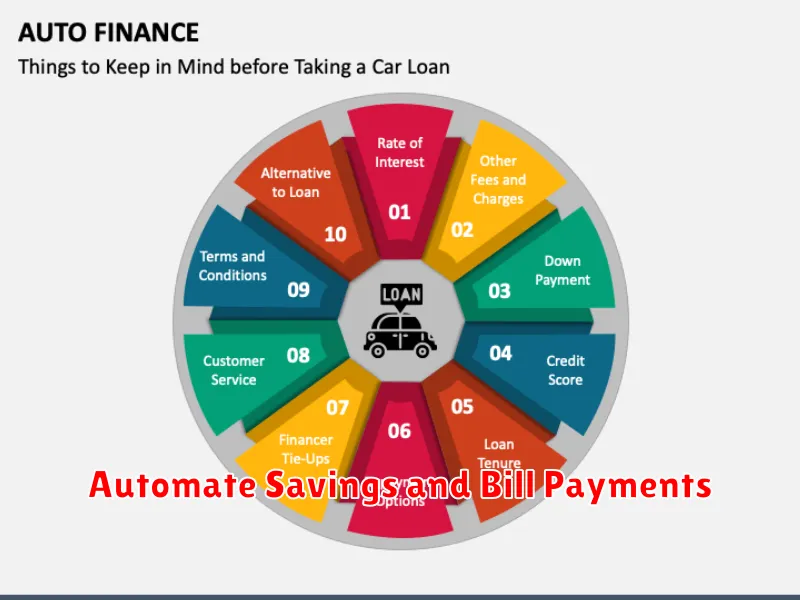Financial consistency is the cornerstone of long-term financial success. Developing and maintaining consistent financial habits, such as regular saving, responsible spending, and disciplined investing, empowers individuals to build wealth steadily over time, weather financial storms, and ultimately achieve their long-term financial goals. This article explores the power of financial consistency and provides actionable strategies for harnessing it to achieve lasting financial success.
Why Consistency Beats Perfection
In the realm of personal finance, the pursuit of perfection can often be paralyzing. We strive for the ideal budget, the perfect investment, the flawless financial plan. However, this quest for flawlessness can lead to inaction and ultimately hinder our progress toward long-term financial success. Consistency, on the other hand, while seemingly less glamorous, is the true engine of growth.
Perfection demands an all-or-nothing approach. A single slip-up, a missed budget target, or a less-than-ideal investment choice can be perceived as failure, discouraging further effort. Consistency, however, allows for adjustments and acknowledges that setbacks are a natural part of the process. It’s about regularly contributing to your savings, consistently paying down debt, and repeatedly making informed financial decisions, even if they aren’t “perfect.”
Small, consistent actions compounded over time yield significant results. Think of regular contributions to a retirement account or the gradual payoff of a mortgage. These seemingly minor steps, taken consistently, accumulate substantial wealth and financial security over the long haul. Perfection focuses on the ideal outcome, while consistency focuses on the process.
Embracing consistency also reduces stress and anxiety surrounding finances. The pressure to achieve perfection can be overwhelming, leading to avoidance and procrastination. Consistency, however, fosters a sense of control and progress, even amidst market fluctuations or unexpected expenses. It empowers us to navigate financial challenges with resilience and adapt our strategies as needed, without being derailed by the pursuit of an unattainable ideal.
Build Daily and Weekly Finance Routines
Consistency is key to achieving long-term financial success. Building robust daily and weekly routines can significantly improve your financial health.
Effective daily routines might include quickly reviewing your bank balance to stay aware of your spending, tracking your expenses using a budgeting app, or dedicating a few minutes to reading financial news. These small actions, practiced daily, contribute to a stronger understanding of your financial position.
Weekly routines allow for a more in-depth analysis. Devote some time each week to reviewing your budget, categorizing your spending, and adjusting your saving and investment strategies as needed. This regular check-in allows you to identify potential overspending areas and stay on track towards your financial goals. Checking your credit report weekly can also help detect errors or fraudulent activity.
Establishing these routines requires discipline. Start small and gradually incorporate more activities. The key is to find what works best for you and stick with it. Over time, these routines will become second nature, empowering you to manage your finances effectively and build a solid foundation for long-term success.
Set a Fixed Day for Reviews and Adjustments
Consistency in finance isn’t just about sticking to a budget; it’s also about regularly reviewing and adjusting your financial plan. Life changes, and your financial plan needs to adapt accordingly. Setting a fixed day each month, quarter, or year for review creates a crucial habit.
Choose a day that works best with your schedule. This could be the first of the month, a payday, or any other date that you’ll readily remember. Mark it on your calendar and treat it as a non-negotiable appointment with your financial future.
During these reviews, analyze your income, expenses, savings, and investments. Compare your actual progress to your planned targets. Are you on track to meet your goals? Are there areas where you’ve overspent or undersaved? This analysis provides valuable insights to inform adjustments.
Based on your review, make necessary adjustments to your budget, savings strategy, or investment portfolio. Perhaps you need to reduce spending in certain areas, increase your savings rate, or rebalance your investments. These adjustments ensure your plan remains aligned with your evolving circumstances and long-term goals.
Use Visual Habit Trackers to Stay Motivated

Visual habit trackers can be powerful tools for maintaining the financial consistency crucial for long-term success. They provide a tangible and satisfying way to monitor progress, reinforcing positive behaviors related to saving, investing, and budgeting. By visually seeing your consistency, you’re more likely to stay motivated and committed to your financial goals.
Consider using a calendar, spreadsheet, or even a simple notebook to track your financial habits. Mark each day you successfully contribute to your savings, stick to your budget, or avoid unnecessary spending. The act of physically marking your progress creates a visual representation of your discipline, providing a sense of accomplishment and encouraging you to continue.
Experiment with different tracker formats to find what works best for you. Some individuals prefer simple check marks, while others find colored-in grids or sticker charts more motivating. The key is to choose a format that you find visually appealing and easy to maintain, ensuring that the tracker itself doesn’t become another chore.
Beyond simple tracking, visual aids can help highlight areas for improvement. By analyzing your tracker, you can identify patterns and pinpoint weeks or months where you may have faltered. This awareness allows for reflection and adjustment, leading to more effective strategies for maintaining financial consistency in the future.
Automate Savings and Bill Payments

Automation is a powerful tool for building financial consistency. By setting up automatic transfers to your savings account and automating bill payments, you significantly reduce the risk of missed payments and ensure regular contributions towards your financial goals.
Schedule automatic transfers to your savings account shortly after each payday. Treat these savings like any other essential expense. Even small, consistent contributions add up significantly over time thanks to the power of compounding.
Similarly, automate your recurring bill payments. This eliminates the risk of late fees and protects your credit score. Set up payment reminders to stay informed, even with automation in place.
Automating these key aspects of personal finance fosters discipline and helps you adhere to your budget, leading to increased financial stability and long-term success. By removing the manual effort, you make consistent progress effortlessly, creating a strong foundation for your financial future.
Avoid Disruption by Planning Ahead for Gaps
Financial consistency is key to long-term success, but life inevitably throws curveballs. Unforeseen events, such as job loss, medical emergencies, or family needs, can disrupt even the most diligent savings and investment strategies. Planning ahead for these potential gaps can significantly mitigate their impact.
Building an emergency fund is crucial. This fund should cover 3-6 months of essential living expenses, providing a buffer against unexpected income loss. Consistent contributions, even small ones, are more effective than sporadic large deposits.
Beyond emergency funds, anticipating other potential disruptions can help maintain financial stability. Consider insurance policies (health, life, disability) to protect against large, unexpected expenses. Regularly review and adjust your coverage as needed.
Flexible budgeting allows for adjustments when disruptions occur. Knowing where to cut back or reallocate funds helps maintain progress towards long-term goals even during challenging periods. Regularly assessing and adjusting your budget builds resilience against unforeseen circumstances.
Finally, consider long-term care planning. While often overlooked, the potential costs of long-term care can significantly impact financial security. Exploring options early can minimize disruption later in life.
Celebrate Every Month of Consistency
Consistency in managing finances is a marathon, not a sprint. Acknowledge and celebrate each month of adherence to your financial plan. This reinforces positive behavior and provides motivation to continue.
These celebrations don’t need to be extravagant. A small reward, like a special meal or a small purchase you’ve been eyeing, can be a powerful incentive. The key is to link the reward directly to your consistent financial behavior.
Reflect on your progress at the end of each month. Review your budget, track your spending, and note your savings growth. This review process is vital, allowing you to identify areas for improvement and appreciate the cumulative effect of your consistent efforts.
Celebrating monthly milestones builds momentum and helps you maintain a positive attitude towards your financial journey. It reinforces the idea that consistent actions, no matter how small, contribute to long-term success.

